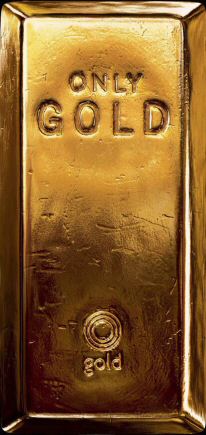Jewelry Sector Drives Gold to Record Demand in 2010
February 20, 11
 |
The Gold Demand Trends report sets out the key factors that drove gold demand in 2010 and 2011 forecast:
· The jewelry sector enjoyed a strong recovery in 2010, with annual demand of 2059.6 tonnes 17 percent higher than in 2009. This resulted in record annual jewelry demand of $81 billion.
· Asian consumers drove jewelry demand, particularly in China and India. Chinese demand is expected to continue to increase rapidly during 2011 as economic growth in China remains strong, while Indian gold jewelry demand is likely to remain resilient and grow.
Asian consumers led demand with the revival of the Indian market and strong momentum in Chinese gold demand, which together constituted 51 percent of total jewelry and investment demand during the year.
· A structural shift in central bank policy towards gold meant that in 2010 central banks became net buyers of gold for the first time in 21 years, removing a significant source of supply to the market.
· Investment demand was down 2 percent compared with 2009, but was the second highest year on record at 1,333 tonnes, which equated to $52 billion. Investment demand for gold as a foundation asset in portfolios is likely to remain strong, fuelled by ongoing uncertainty surrounding global economic recovery and fiscal imbalances, as well as fear of impending inflationary pressures and currency tensions.
India was the strongest growth market in 2010. Total annual consumer demand of 963.1 tonnes registered a growth of 66 percent, largely driven by the jewelry sector. In value terms, this was worth $38 billion.
China was the strongest market for investment demand growth. Annual demand for small bars and coins increased by 70 percent to 179.9 tonnes, worth approximately $7 billion.
“The opening weeks of this year have been characterized by an East/West divide,” said WGC Managing Director, Investment Marcus Grubb. “The dip in the gold price in January resulted in a reduction of ETF tonnage and a decline in the net speculative long position on COMEX. This has been counterbalanced by very substantial physical demand flows in Asian markets.”
WGC said that the shift in central bank activity was the result of two distinct market forces. Emerging market economies, experiencing rapid growth, have been large buyers of gold to diversify their external reserves. Meanwhile, European central banks have virtually stopped sales in the wake of the financial and European sovereign debt crises. Today’s Gold Demand Trends report examines the impact of this development on the gold market in more detail.
According to George Milling-Stanley, Managing Director, Government Affairs at WGC, “Emerging country banks are likely to continue purchasing gold as a means of preserving national wealth and promoting greater financial market stability. Any gold sales from advanced economies are unlikely to be significant as the official sector remains highly risk-averse. Collectively, the official sector is still a significant holder of gold. Central banks remain committed to its importance and relevance in maintaining stability and confidence as they have been for hundreds of years.”
Total gold supply is estimated to have increased just 2 percent in 2010, with a number of new projects across a range of countries and regions contributing to higher levels of mine supply. Within total supply, recycled gold, which accounts for 40 percent, fell 1 percent compared with the previous year to 1,653 tonnes.